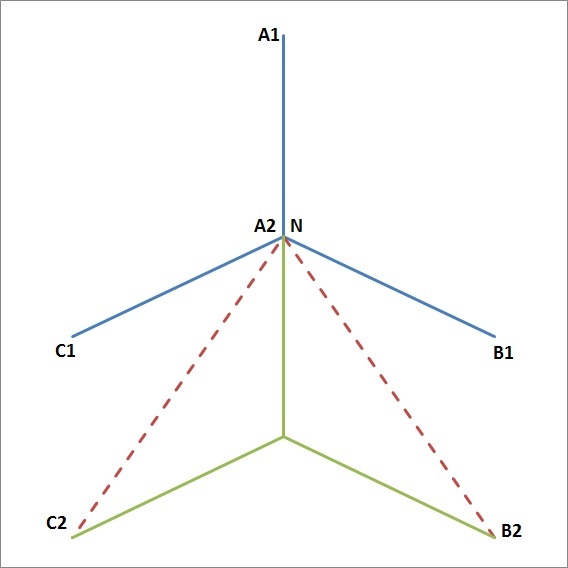Hi
I have come across a 11kV VT which has one 33kV primary winding, one three-phase secondary winding and one delta winding. Ratios are given as [11kV/SQRT(3)]:[110V/SQRT(3)]: [110V/3].
I am comfortable with the ratios of the three-phase windings being [11kV/SQRT(3)]:[110V/SQRT(3)] which boils down to 100:1.
But I cannot understand where the 110V/3 comes from for the delta winding. The way I see it the open-delta voltage is the sum of the 3 phase voltages, VA + VB + VC = 3V0 = 0 with a healthy system. With a fully blown EF (say on A phase), VA is missing and so output is VA. This would be 63.5V and the primary side on the A-phase is 33kV/SQRT(3) which leads to 100:1 again? So why 110V/3?
Thanks.
I have come across a 11kV VT which has one 33kV primary winding, one three-phase secondary winding and one delta winding. Ratios are given as [11kV/SQRT(3)]:[110V/SQRT(3)]: [110V/3].
I am comfortable with the ratios of the three-phase windings being [11kV/SQRT(3)]:[110V/SQRT(3)] which boils down to 100:1.
But I cannot understand where the 110V/3 comes from for the delta winding. The way I see it the open-delta voltage is the sum of the 3 phase voltages, VA + VB + VC = 3V0 = 0 with a healthy system. With a fully blown EF (say on A phase), VA is missing and so output is VA. This would be 63.5V and the primary side on the A-phase is 33kV/SQRT(3) which leads to 100:1 again? So why 110V/3?
Thanks.

